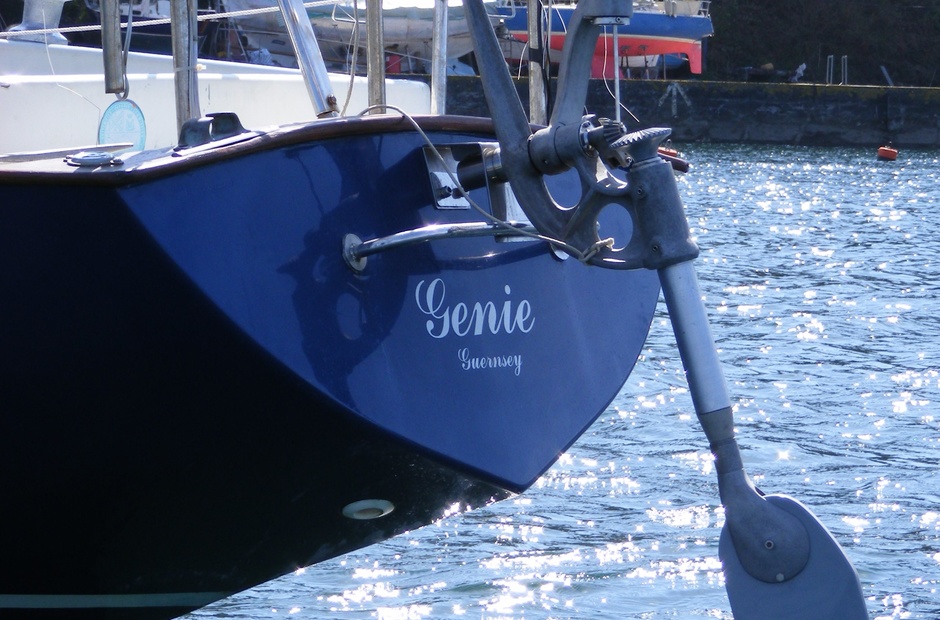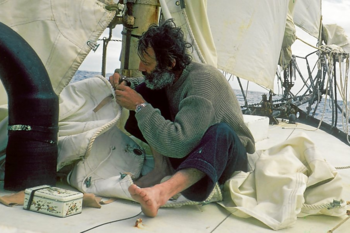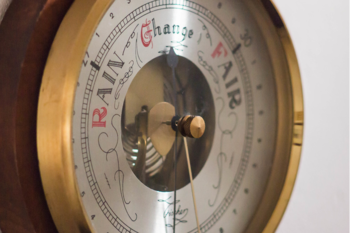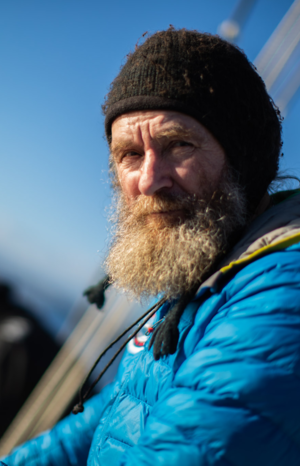A robust helmsman frees you from the tedious and monotonous job of keeping your yacht on course. This option is especially important for night time and gives you more time to change your sails and set up and repair them; you can take a distraction and look around, set up a course or swing by the cabin
By a principle of work autoruders are divided into electronic (autopilots) and wind. The discussion of which type of helmsman is better remains relevant for many yachtsmen, and most agree that each has its own strengths and weaknesses, which complement each other perfectly. If it is possible to use both variants, their combination is a universal solution.
If you have to choose one
Wind power steering is independent of power sources, is not part of a long chain of power supply on a yacht, where there are many elements that can break down at any moment and are not themselves made up of.
Wind power steering is represented by many brands and designs, but all of them are united by reliability. Hydraulic force on the pendulum nib required to control the baller is quite large. Add to it reliability of a design and non-stop in work, and agree that it is not terrible to leave such comrade alone in stormy weather when the autoruder is needed most of all.
«I think he'll outlive me," says Alvah Simon», author of Wind Wing Yachting«, about his used Aries helmsman over 30 years ago, who travelled with him from yacht to yacht and participated in many long voyages.- At the same time, I have a full box of spare parts that I collected from all the electronic helmships that were broken in the same period.

However, the old lady also has a bad luck.
Very good possible problems with wind power steering shows the experience of participants of single non-stop Golden Globe Race, by the rules of which the use of modern electronics on board is prohibited.
By the middle of the race, ten out of 18 competitors had dropped out of the race, one of them on their own, four due to mast damage and five due to problems with the steering wheel. At the moment, this is the main reason for quitting the race.
A total of six people struggled with idle autoruders without sleep or rest right in the middle of the ocean, in hurricane winds. Five of them are out of the race, one is Istvan Kopar - still hanging on, periodically repairing his assistant.
Puffin Istvan has a Windpilot auto-rudder with pendulum servo. Due to the breakage of the steering wheel, he had to go to the islands of Cape Verde to fix it. The organizers had to remove him from the fight for the main prize, but limited themselves to a 24-hour fine, taking into account that Kopar did not go ashore during the stop and did not accept emergency assistance (although he did call the Windpilot representatives and received instructions from them on how to resuscitate the helmsman).
The Windpilot representatives wrote in their blog that in case of Istvan, the breakage of the steering wheel was caused by installation errors and incomplete understanding of the system.
But not all GGR members who use Windpilot products have problems with the steering wheels because of their own fault. Antoine Cousot. is weakened by .wind feather attachment bolt. He pressed it down, but later he lost the bracket for fastening the slings and the bolts on the foundation holding the angle of the pendulum-feather.Antoine entered the marina for repairs and replaced the bolts in a few hours, but was transferred to the Chichester class and then finished the race by docking in Rio. You can study the design of Antoine Cusoe's steering wheel. here ..
Windpilot's author is also standing on Igor Zaretsky's yacht - the only Russian in the race - and let's hope that he won't let him down.
Apart from Windpilot, Golden Globe Race competitors also use Beaufort and Hydrovane auto-steer wheels. Hydrovane is one of the sponsors of the round the world.
Racing leader Jean-Luc van den Heede, Ertan Beskardes, Gregor McGuckin, Loïc Lepage, Uku Randmaa, but only Kevin Farebrother left the race due to problems with the Hydrovane steering wheel. And with him the situation is ambiguous - after the end of the regatta Fairbrother said that sailing is not for him, that he will return to his favorite climbing, and the boat will be put up for sale. So it's likely that the root of Fairbrother's problem is his little sailing experience. At the same time, the experienced Jean-Luc van den Heede also reported problems with the helmsman when sailing in stormy conditions with a wind of 45-50 knots. However, he managed to cope with them and still leads the race.
Beaufort's steering gears, however, were not as reliable. First, Nabil Amra reported a weld crack in the steering wheel structure. He tied up the cracked part to hold out a little longer, but already then he knew that it was not comfortable to walk like that in a storm with wind speeds over 30 knots, to put it mildly. Nabil left the race on July 18th.
Philippe Péché was one of the race leaders until August 10. Surely his plans were to continue in the same vein, but the steering wheel decided otherwise. His Beaufort broke down in the same place as Nabil's. The yachtsman repaired the rudder, using a stainless steel pipe that was on board in case the rudder pen drive was broken. But then there was another failure - on August 11th his pen drive broke and he was left almost without control. As a result, Pesce was able to make an uncomfortable one-metre drive, with which he was able to control the yacht, but without an auto-steer. On the 25th of August Philip Pesce came out of the race as the repaired autopilot was too weak to go with him to the South Ocean.
On August 31st, Francesco Cappelletti reported the breakage of the autopilot. The situation was completely similar to that of Nabil.
Analyzing the experience of GGR participants, we can draw the following conclusions - the wind turbine is quite reliable (because it was used 24/7 - at the limit, in the harshest conditions), but before installing it, you should have a good understanding of the device and features of installation. This is what we will try to do in this article.
Historical reference.
The history of the helmsmen began before World War I. The ancestor of the helmsman was the system proposed for use on racing yachts by George Braine. Braine's system consisted of blocks, ropes and rubber bands that tied together the sails and a special drive on the rudder pen baller. Thanks to this design, the yacht was driven by the wind or roll, dropping the wind from the sails and returning to the course. But every time the tack was changed the system had to be reinstalled. This required the efforts of the shore team.
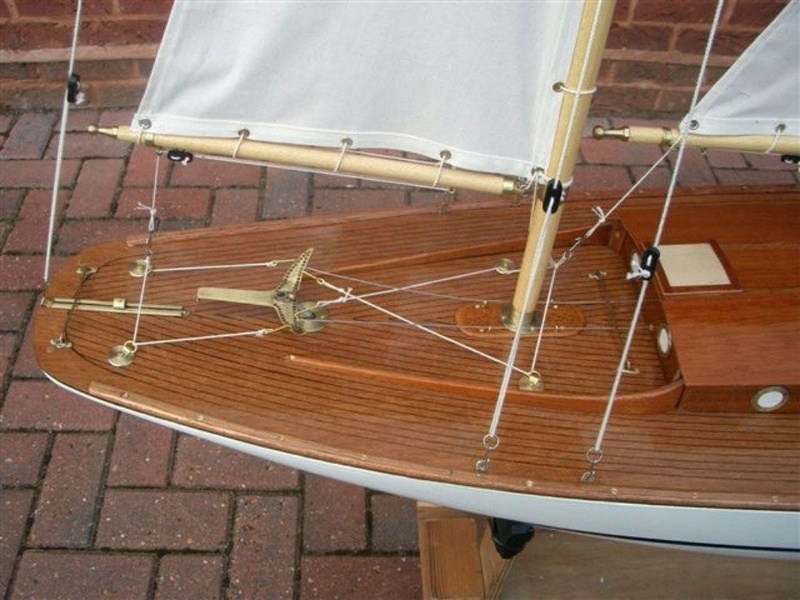
The first similarity of the modern motor rudder was the device of the Frenchman Marin Marie and it was used not on a sailing but on the 14-meter motor yacht Arielle during a single 18-day crossing from New York to Le Havre in 1936. The device was a huge wind wing connected to the pen by ropes. Now you can see it in the Maritime Museum of
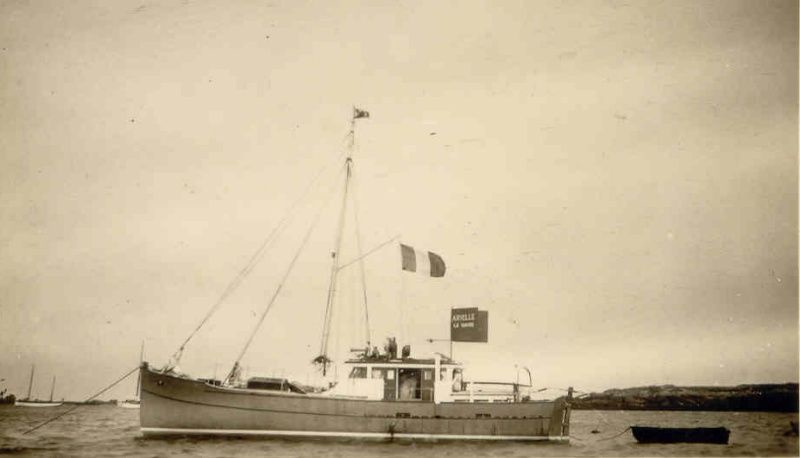
In 1955, British yachtsman Ian Major set out on a solo voyage from Europe to the Caribbean using a small wind wing that controlled the flaps on the helm. This system was the most common at the time. The same principle was followed on the
The beginning of a new era in the development of autoruders was the first race OSTAR (Observer Singlehanded Transatlantic Race), launched from Plymouth
Five skippers participated: Frances Chichester, Blondie Hasler, David Lewis, Valentine Howells and Jean Lacombe.
Francis Chichester took part in the race on the Gipsy Moth III with the autopilot named Miranda mounted on her. Miranda consisted of a 4 sqm wing and a 12 kg counterweight connected to the tiller by ropes through a system of blocks. But this design was unstable and Francis was pondering how to balance the feather and wind wing area.
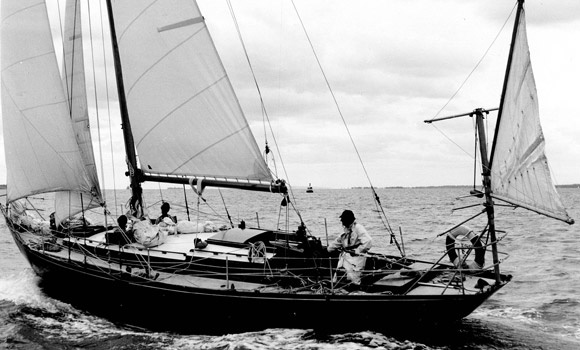
On board Blondie Hasler's Jester, the first servo-powered steering was used.
Onboard David Lewis and Valentine Howells' yachts, Blondie Hasler and Marcel Janoli made the most significant contribution to the development of wind helmsmen.
In 1970, the first electronic autopilot appeared, and it was originally designed for small fishing boats. It was produced by Tillermaster.
Design
Most wind turbine steering gears are based on two basic designs - a servo pendulum
The
The main disadvantage of this system is the pendulum's arc limitation, which depends on the size of the autorail's frame. Usually the stroke of the pendulum and the cable is about 30 cm. This is almost invisible if the rope is attached to the tiller, as it can be fixed in the optimum place. A cable can also be placed on the steering wheel on a drum with a larger diameter for a larger steering angle, or a smaller diameter for more force. The further the steering wheel is from the stern, the longer the ropes will be. They will stretch out more and sag more, which will have a negative impact on handling.
The auxiliary pen system is largely represented on the market by Hydrovane. The system is an additional wind wing driven pen attached to the stern with a vertical or horizontal axis of rotation.
With this system, the main rudder arm is locked in position along a diametrical plane or slightly at an angle to compensate for the drive or lash, depending on the situation.
A huge advantage of the system with an additional pen is that it can be used as an emergency steering wheel.
Given the experience of yachtsmen, one of the most common serious breakdowns on board is a failure of the steering system. They are caused by the loads that the rudder feels constantly at work. Therefore, the steering unit must be securely fixed in the construction of the hull and made of durable materials, and the properly selected shape of the pen and its size will help to maneuver without effort and reduce the load on the steering. Nobody would like to remain without management in the open sea.
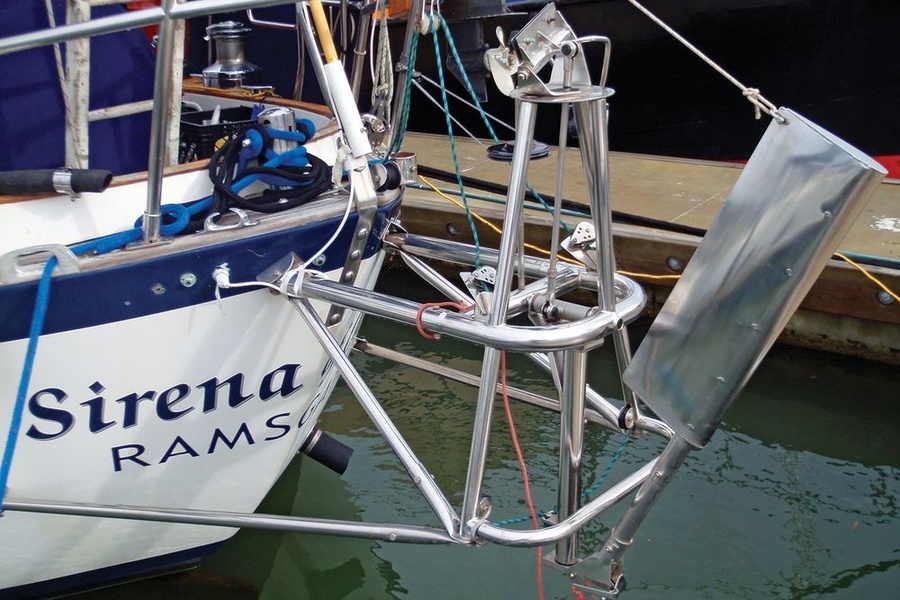
As to operation, here, as well as in any relations with the autoruder, it is necessary to practice and patience.
Make sure that the boat runs with confidence. Balance it out, align the waterline by placing the load closer to the middel, set the sails to the optimal size to suit the weather. Excessive heel not only slows the boat down, but the waterline is not what the designer expected. Make sure that the wind wing is not in the wind shadow of the superstructure or is not subject to turbulent flow from the solar panel or windshield. Experiment with wing angles, cable tension in different weather conditions and record the results.
Advantages and disadvantages
Disputes between key steering wheel manufacturers and sellers do not cease on the Internet. As always, everyone advertises their product, missing out on the benefits of others. This raises doubts as
In his article, Alva Simon says that he himself used both a servo pendulum system and an auxiliary pen system. And advised to choose according to the type of yacht on which the system will be mounted, as well as the type of steering, sailing conditions and purchase budget. In his opinion, the auxiliary pen is more sensitive to light wind and more suitable for sailing. The servo drive in turn can keep the yacht steady in the harshest weather, while a person gets tired in one hour.
The features of the servo pendulum drive and the extra pen
| Auxiliary feather | Servo Drive |
|---|---|
| Lifting the pen | |
| You can't lift it up to clear it of debris and algae. | You have to pay attention to the design of the lift, it can fly off the mount too easily. |
| Accidents | |
| There are no «weak points» and any collision will cause serious damage to the system. | In a collision, it rises and goes back with a pull-back, you can lift it when not in use. |
| Enclosure of the cockpit after installation | |
| Doesn't need to clutter up the aft cockpit and utah. The whole structure remains overboard. | Due to the slinging from the servo to the drive or steering wheel, the cockpit is not as inhabited as it used to be, and the cockpit has to be stepped over constantly. |
| Course Setting | |
| No ropes going to the baller. There is only a little wiring from the device to a convenient place in the cockpit for remote selection of the desired course. When using, you need to fix the main pen. | The ropes need to be set up and tightened. When used with the drive on the baller, the chain is usually connected to the ropes and the links between the self-tapping screws or the lock. Alva Simon suggests using a two-way locking bracket (lock crocodile) for convenience, and on the tiller screw the eyelet, and through it to produce the rope. In this way you can quickly adjust the tension and reduce slippage, and in difficult situations, instantly relax them and intercept the control. |
| Broaching | |
| The area of the auxiliary pen is much smaller than the main pen, but by fixing the main pen the side resistance increases and thus the chance of broaching decreases. | The yacht's self-extraction from the broaching. Sometimes the yacht suddenly hits a wave abruptly and instantly leads to the wind, but at the same time the change of direction is worked out by the wind wing, which turns the rudder pen through the servo drive in the opposite direction and returns the yacht to the course. |
| Installation . | |
| According to Hydrovane, the auxiliary nib can be mounted in a non-diameter plane without losing control. But not everyone will find this solution suitable, because if you take the pen too far, it will come out of the water on the rolls. | A lot of space is needed for mounting the frame. |
| Multi-hull yachts | |
| Use on catamarans is difficult due to the large gap between the bridge and deck, the presence of two feathers, but is common in world practice. | Can be used on multihulls. |
With regard to pricing, it cannot be denied that basic models with an auxiliary pen cost 25-40 per cent more than models with a servo drive. This is due to the cost of the materials used in the manufacture of the auxiliary nib.
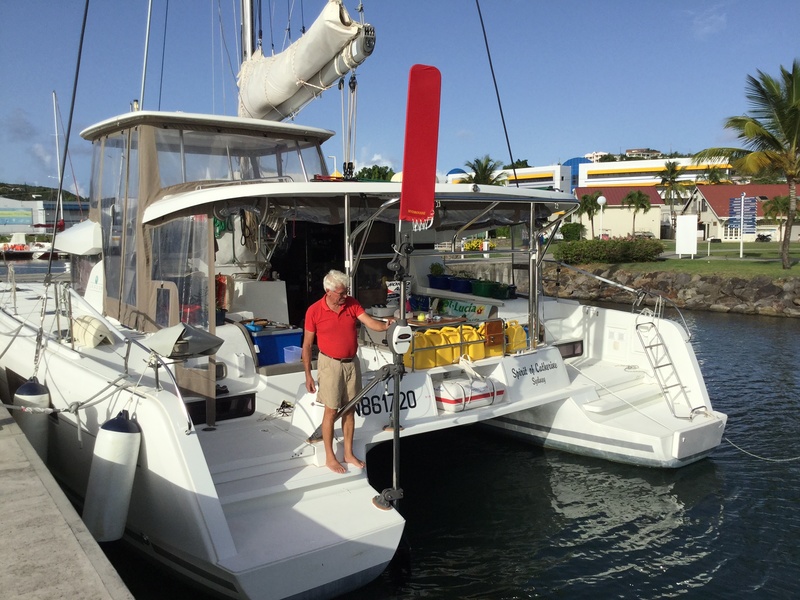
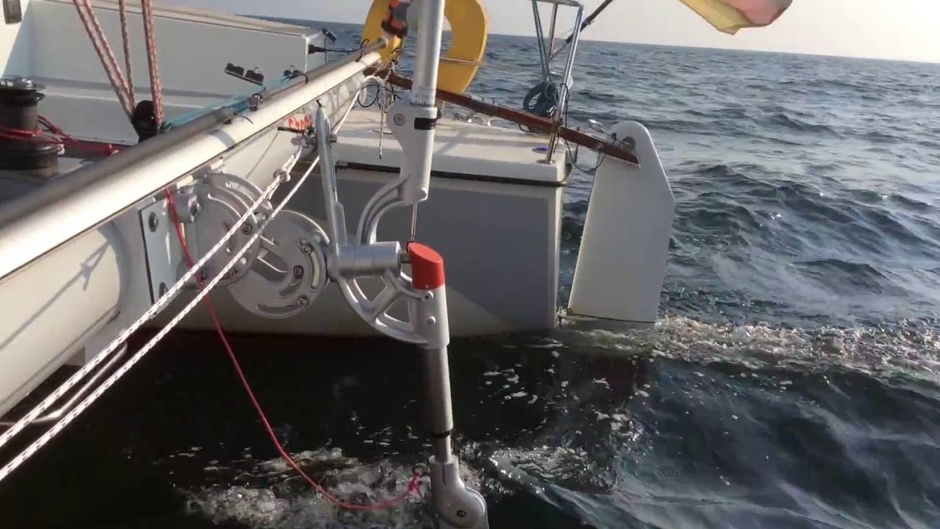
Some types of transponders require a personalized design approach. Below you can see an example of mounting a steering wheel on a step-by-step stern on a frame. It is also worth paying attention to the raised servo pen, it does not create any resistance on the move, and so it is easier to maneuver in narrow places and under the motor.
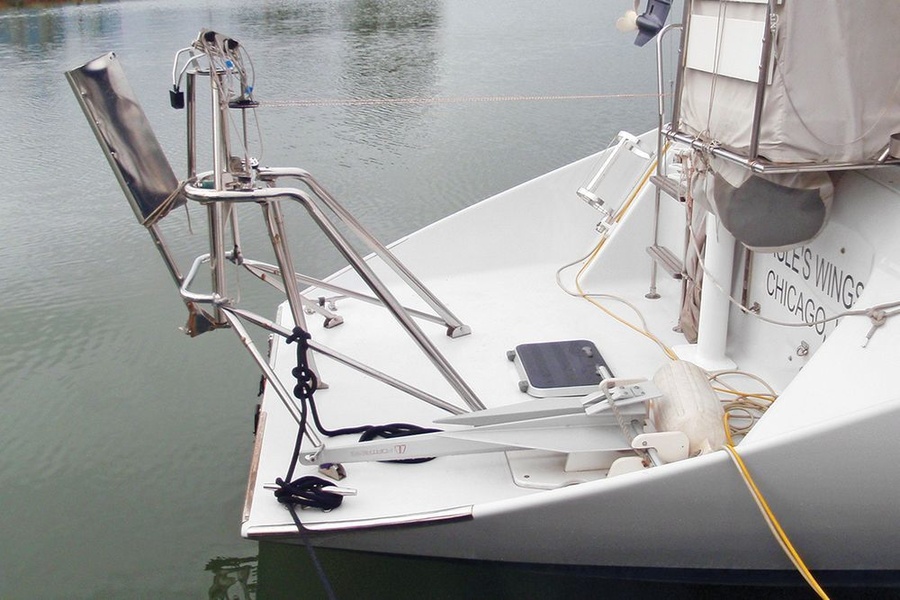
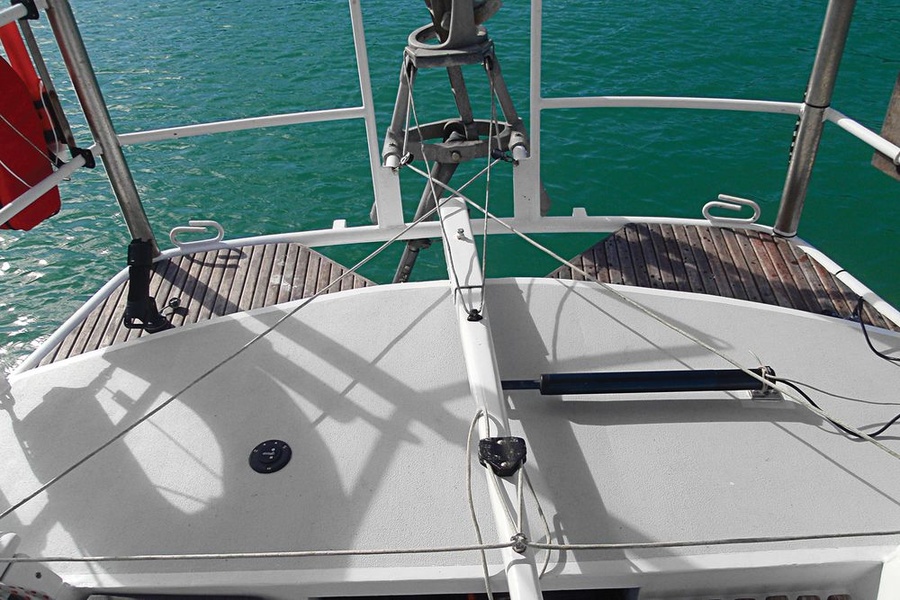
For fans of systems with a servo drive company Monitor has offered to place such a system on the opening gates and called this method of installation SwingGate. SwingGate looks like a huge frame at the stern of the ship on which the servo is mounted. The frame can be opened and the gangway thrown off, for example.

Summing up
When choosing between autoroaders, the source data should be the type of your yacht and the conditions under which you sail most of the time. If these are long term transitions, you will definitely be using mechanical drive, perhaps sometimes switching to autopilot.
Buying and installing an autopilot is likely to be the most expensive venture on your yacht.
«I haven't seen a single yachtsman give a name to his stack spin, but everybody gives a name to an auto-rudder. Believe me, in the middle of the ocean, you're going to have a heart-to-heart conversation with him as a friend,"»says Alva Simon.
The modern steering market is represented by the following companies: Aries, Beaufort, Capehorn, Fleming, Hydrovane, Monitor, Neptune, Sailomat, Sea Feather, Voyager, Windpilot, Scanmar, Holland, Mister Vee, Norvane, South Atlantic, Vectavane, Windgear.

